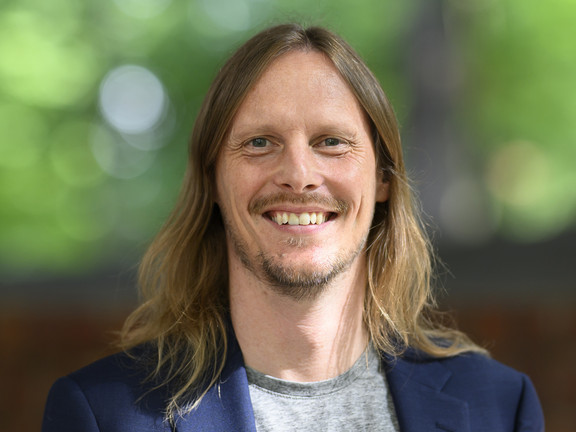Saving Energy with Intelligent Materials
- News
- Research Alliance Ruhr
- UA Ruhr
- Research

Ferroic materials are surprisingly common in our everyday lives and offer remarkable technological versatility. “Our team studies materials with electric and/or magnetic properties—so-called ferroic materials—which are highly sensitive to external stimuli such as electric or magnetic fields,” Meier explains. “These materials contain regions of ordered structures known as domains, with the boundaries between them referred to as functional domain walls. These walls, along with spin textures—finely structured magnetic patterns on the nanoscale—often exhibit extraordinary physical properties that we can specifically harness for novel applications.”
What makes these properties especially valuable is that they persist even at the smallest scales, making ferroic materials ideal for miniaturization. That’s why they are essential components in modern technologies, from smartphones and memory chips to wireless earbuds. “Building on our previous research, we aim to investigate and manipulate these effects down to the atomic scale,” Meier continues. “To achieve this, we use advanced microscopy and nanostructuring techniques. This work lays the foundation for future energy-efficient information and sensor technologies.”
To explore these materials in detail, Meier’s team employs high-resolution microscopy methods such as scanning probe microscopy and electron microscopy. Using focused ion beams, they can precisely create or modify nanoscale structures. Additionally, Meier is working on advancing high-precision special microscopy to look inside materials at an atomic level. “Our research contributes significantly to the development, characterization, and practical implementation of novel energy materials,” he says. “It opens up entirely new conceptual approaches to low-power information processing and sensor technologies.”
“Assembling quantum materials on the atomic scale to reveal novel and unique properties means that cutting-edge basic research in physics is driving spectacular advances in fields such as spintronics and topological systems,” notes Prof. Dr. Barbara Albert, Rector of the University of Duisburg-Essen. “This kind of work leads us into the future, and we are proud to have secured such a top researcher for both the University Alliance Ruhr and the University of Duisburg-Essen.”
Dennis Meier has received numerous honors for his research, including a Consolidator Grant from the European Research Council (ERC) in 2019, the Gustav Hertz Prize from the German Physical Society in 2017, and several prestigious awards from the Norwegian scientific community.
He studied physics at the University of Cologne (2000–2006) before conducting research at the University of Bonn, where he earned his doctorate in 2010 at the Helmholtz Institute for Radiation and Nuclear Physics. From 2010 to 2013, he worked as a Feodor Lynen Fellow of the Alexander von Humboldt Foundation at the University of California, Berkeley (USA). He then led a junior research group at ETH Zurich (Switzerland) from 2013 to 2016, where he also completed his habilitation. Prior to his appointment in Duisburg-Essen, Meier was a professor at the Norwegian University of Science and Technology in Trondheim.
Further informationen:
Prof. Dr. nat. Dennis Meier, RC Future Energy Materials and Systems/ UA Ruhr, dennis.meieruni-duede
Editor: Dr. Alexandra Nießen, alexandra.niessenuni-duede

